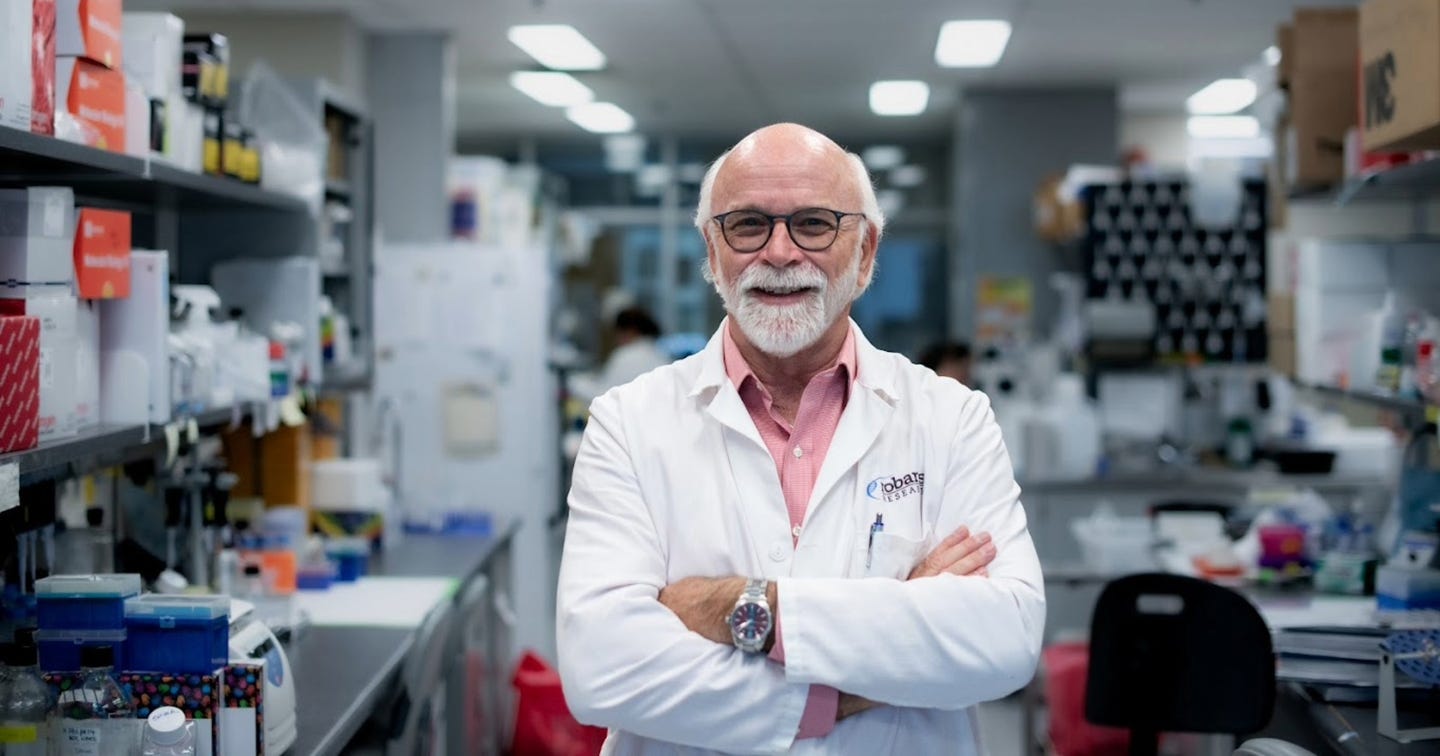Groundbreaking discovery could lead to ALS cure
ALS is a devastating neurodegenerative disorder that progressively destroys nerve cells responsible for muscle control

In a significant development in the fight against amyotrophic lateral sclerosis (ALS), researchers at Western University, led by Dr. Michael Strong, have uncovered a potential pathway towards a cure. This discovery, backed by the generous support of the Temerty Foundation, could revolutionize the treatment of ALS and other related neurological conditions.
Dr. Strong, a clinician-scientist with a career dedicated to ALS research, expressed his commitment to finding a cure. “As a doctor, it’s been so important for me to be able to sit down with a patient or their family and say to them, ‘we’re trying to stop this disease,’” Strong said.
ALS, also known as Lou Gehrig’s disease, is a devastating neurodegenerative disorder that progressively destroys nerve cells responsible for muscle control, leading to muscle wastage, paralysis, and eventually death. The average life expectancy post-diagnosis is a mere two to five years.
Published in the journal Brain, the study by Strong’s team revealed that targeting the interaction between two proteins present in ALS-affected nerve cells can halt or reverse disease progression. This breakthrough has the potential to pave the way for new treatments not only for ALS but also for conditions like frontotemporal dementia.
“Importantly, this interaction could be key to unlocking a treatment not just for ALS but also for other related neurological conditions,” said Strong, who holds the Arthur J. Hudson Chair in ALS Research at Western’s Schulich School of Medicine & Dentistry. “It is a gamechanger.”
Mechanism of Action
In nearly all ALS patients, a protein called TDP-43 forms abnormal clumps within cells, leading to cell death. Strong’s team discovered that a second protein, RGNEF, performs functions that counteract the effects of TDP-43.
Their latest research identified a specific fragment of the RGNEF protein, named NF242, which can neutralize the toxic effects of TDP-43. When these two proteins interact, the toxicity of TDP-43 is mitigated, significantly reducing nerve cell damage and preventing cell death.
Related Stories
The approach showed remarkable results in fruit fly and mouse models. In fruit flies, it extended lifespan, improved motor functions, and protected nerve cells from degeneration. Similarly, in mice, it enhanced lifespan and mobility while reducing markers of neuroinflammation.
The path to this discovery was paved by the Temerty family’s sustained investment in ALS research at Western. Dr. Strong acknowledged their support as “truly transformational.”
To advance this potential treatment to human clinical trials within the next five years, the Temerty Foundation is investing an additional $10 million over five years. This new funding brings the family’s total contribution to neurodegenerative disease research at Western to $18 million.
“Finding an effective treatment for ALS would mean so much to people living with this terrible disease and to their loved ones,” said James Temerty, founder of Northland Power Inc., who established the foundation with Louise Arcand Temerty. “Western is pushing the frontiers of ALS knowledge, and we are excited for the opportunity to contribute to the next phase of this groundbreaking research.”
Western President Alan Shepard praised the collaboration between Dr. Strong and the Temerty Foundation. “Dr. Strong’s relentless dedication to his field is matched only by the Temerty family’s deep desire to make a difference for the thousands of people around the world diagnosed with this devastating disease,” Shepard said. “The investment – and foresight – of the Temerty Foundation has accelerated progress in finding an effective treatment for ALS. We are grateful for the Temerty family’s commitment to life-changing research.”
Dr. John Yoo, dean at Schulich Medicine & Dentistry, emphasized the significance of this development. “This is a pivotal moment in ALS research that could truly transform patient lives,” Yoo said. “With Dr. Strong’s leadership, our continued investment in the best tools and technology, and the visionary support of the Temerty Foundation, we are thrilled to be heralding in a new era of hope for patients with ALS.”
Looking Ahead
With the new funding in place, Dr. Strong and his team are focused on advancing their research to clinical trials, aiming to bring effective treatments to ALS patients. This ambitious goal represents a beacon of hope for those affected by ALS and underscores the importance of sustained investment in scientific research.
This discovery not only marks a significant milestone in ALS research but also exemplifies the power of philanthropy in driving scientific breakthroughs. The collaborative efforts of dedicated researchers and visionary donors like the Temerty family continue to push the boundaries of what is possible, offering new hope for those battling ALS and other neurodegenerative diseases.
For more science and technology stories check out our New Discoveries section at The Brighter Side of News.
Note: Materials provided above by The Brighter Side of News. Content may be edited for style and length.
Like these kind of feel good stories? Get the Brighter Side of News' newsletter.
Joshua Shavit
Science & Technology Writer | AI and Robotics Reporter
Joshua Shavit is a Los Angeles-based science and technology writer with a passion for exploring the breakthroughs shaping the future. As a contributor to The Brighter Side of News, he focuses on positive and transformative advancements in AI, technology, physics, engineering, robotics and space science. Joshua is currently working towards a Bachelor of Science in Business Administration at the University of California, Berkeley. He combines his academic background with a talent for storytelling, making complex scientific discoveries engaging and accessible. His work highlights the innovators behind the ideas, bringing readers closer to the people driving progress.



